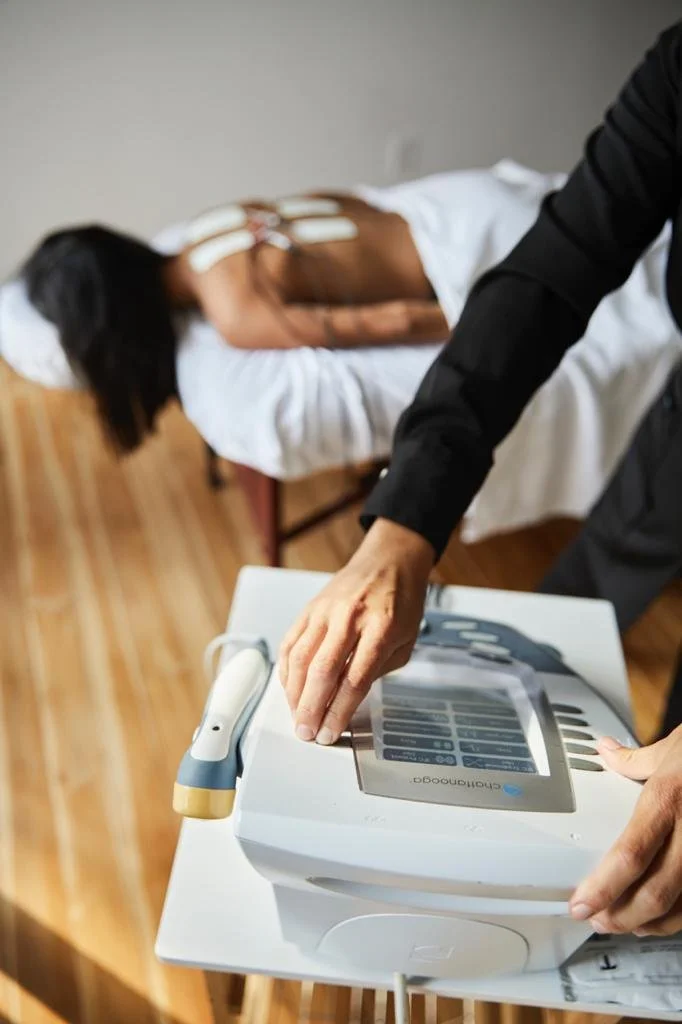
Physical Therapy
Physical Therapy sessions provides guidance and treatment for injured individuals to aid in their recovery process and regain functionality. Within a physical therapy session, we may implement any or some of the following techniques in order to assist with the healing -
Dry Needling: A technique that involves inserting thin needles into trigger points to relieve pain and improve muscle function.
Pressotherapy: also referred to as compression boots or pneumatic compression therapy, involves the use of inflatable garments that apply pressure to various parts of the body, typically the legs. This sequential compression helps improve circulation, reduce fluid retention, and enhance lymphatic drainage.
Diacutaneous fibrolysis is a manual therapy technique that involves the use of specially designed tools to address soft tissue restrictions and adhesions. The goal is to break down scar tissue and improve mobility, often used in physical therapy and sports medicine settings.
Electrical stimulation, also known as electrotherapy, involves the use of electrical currents to stimulate nerves and muscles. It can be used for pain management, muscle rehabilitation, and to improve circulation.
Magnetotherapy, also called magnetic field therapy, utilizes magnetic fields to promote healing and alleviate pain. It is believed that these magnetic fields can stimulate cells and improve blood flow, assisting in the recovery process.
KT Tape or KinesioTape is an elastic therapeutic tape that is applied to the skin to provide support, stabilize joints, and facilitate proper movement. It is commonly used by athletes to prevent injuries and aid in recovery.
Therapeutic ultrasound is indeed a widely used modality for therapy purposes. It utilizes high-frequency sound waves to generate heat within body tissues, promoting healing and providing pain relief. This non-invasive treatment method is commonly used by physical therapists and chiropractors to target deep tissues and facilitate rehabilitation.
Therapeutic ultrasound offers a range of benefits for individuals undergoing therapy. Here are some key advantages:
Pain relief: Ultrasound waves can help reduce pain by increasing blood flow and promoting tissue relaxation. This can be particularly beneficial for conditions such as muscle strains, joint inflammation, and arthritis.
Tissue healing and regeneration: The heat generated by therapeutic ultrasound can accelerate the healing process by increasing blood flow to the affected area. This enhanced circulation delivers oxygen, nutrients, and immune cells to promote tissue repair and regeneration.
Increased flexibility and range of motion: By targeting deep tissues, therapeutic ultrasound can help increase flexibility and improve joint mobility. It achieves this by breaking down scar tissue or adhesions, which can restrict movement.
Reduction of muscle spasms: Ultrasound therapy can help relax muscle spasms and reduce muscle tightness. This can be particularly beneficial for individuals with muscle-related conditions or injuries.
NOW, LET'S DISCUSS HOW THERAPEUTIC ULTRASOUND WORKS.
During the treatment, our therapist applies a gel to the treatment area to ensure good contact between the ultrasound probe and the skin. The probe emits high-frequency sound waves, which penetrate the skin and cause vibrations in the underlying tissues.
These vibrations generate heat due to the friction caused by the sound waves. The heat, in turn, increases blood flow, relaxes muscles, and promotes the healing process. The therapist will adjust the intensity, frequency, and duration of the ultrasound based on the individual's specific needs and condition.


